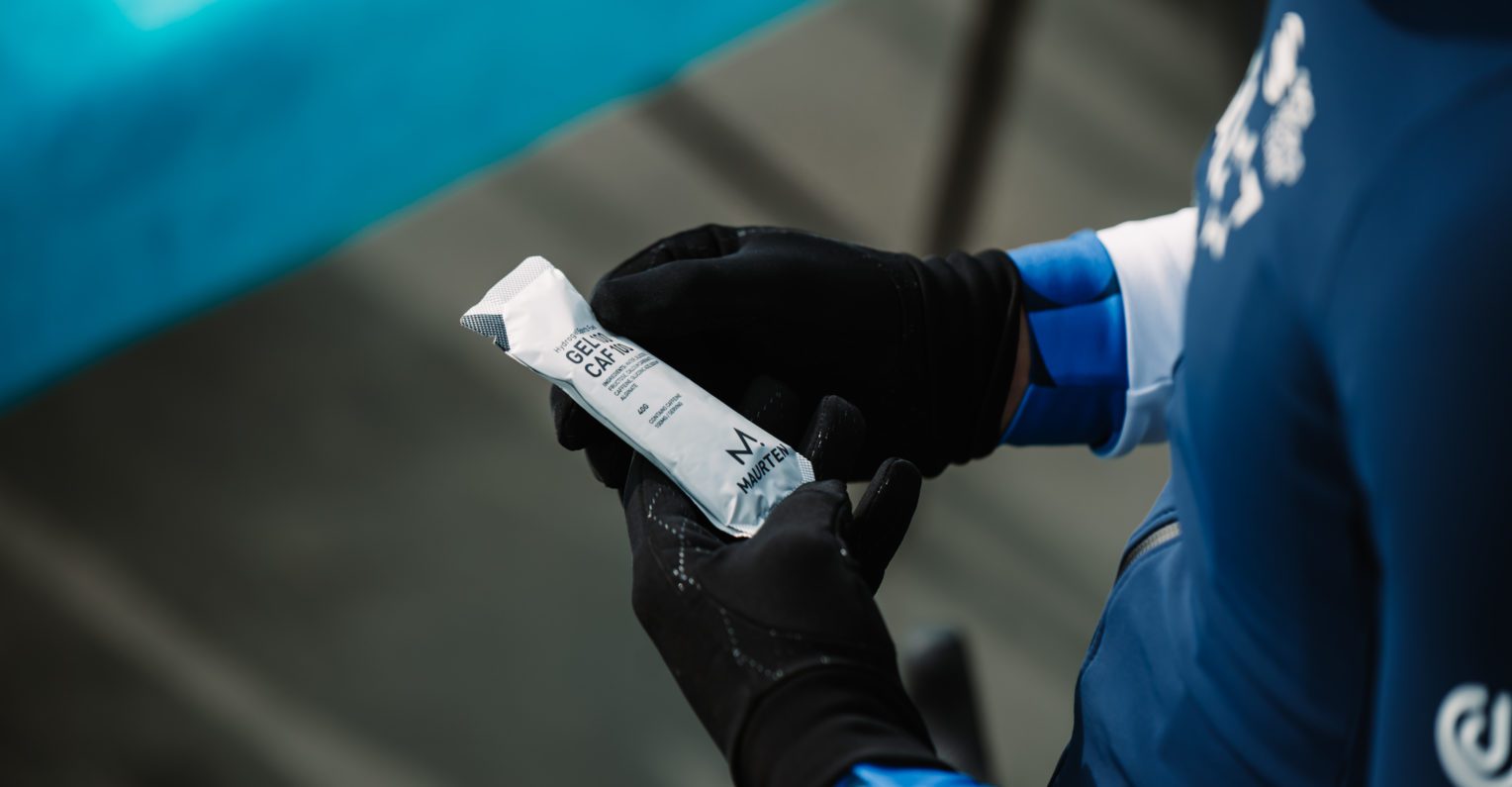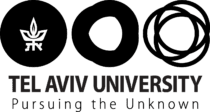Milano – Sanremo: the easiest Monument to race but the hardest to win. You’ve probably heard that many times before. IPT’s leader Giacomo Nizzolo brought a new perspective this year when he said “you need a strong mind, a strong heart, legs, and a bit of luck” to win the first Monument of the season. The first 200 kilometers may be relatively “easy” to race but when you’re looking at a 293-kilometer (plus neutral zone!) race, getting your fueling strategy right is the one part of the race that doesn’t come down to luck. That’s where every rider relies on a dedicated nutrition strategy for the six-hour plus race.
But, as IPT nutritionist Gabriel Martins explained, a good nutrition strategy isn’t just about the six hours of racing. In fact, it started days ago.
Pre-race preparation
Seven riders rolled out from the start line this morning, each with a unique role and a tailored nutrition plan, said Martins.
“Depending on the role of the rider, some start to load up the day before the race, while others with a more crucial role and heavier workload will have started loading 48 hours prior to the race with a very clean and low residue diet so that they can top up their glycogen stores, while accumulating the least amount of weight possible.”
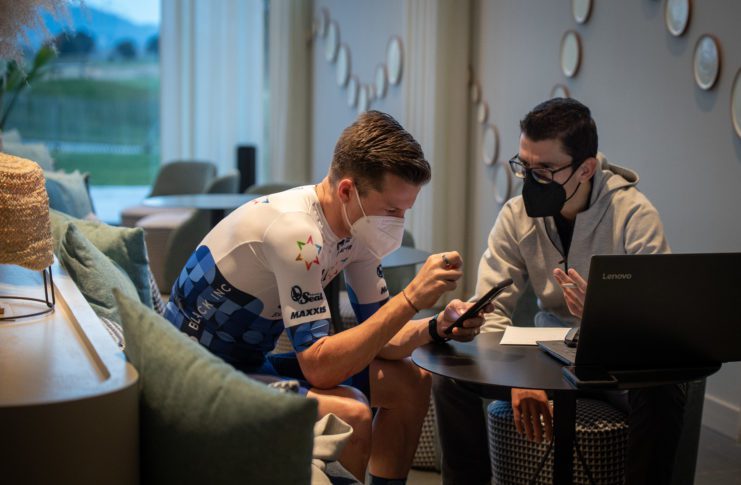
The calm before the storm
The length of Milano – Sanremo isn’t the only factor when it comes to nutrition. The start time plays an important role and unfortunately, for the riders that meant the arm clocks went off early this morning.
“Milano – Sanremo starts much earlier than the usual races and riders are expected to fuel high for almost six hours. For this reason, they need to have their breakfast as early as three hours before the race which means a very early wake up. This is critical to allow the riders to properly digest their breakfast and achieve a good GI comfort to achieve their fuelling targets during the race,” added Martins.
Different riders have different food preferences and its up to the nutritionist to set the amounts for each rider to achieve their pre-race fuelling using different foods. Some riders will eat huge amounts of porridge (600g), combined with honey or maple syrup, and bread with jam. One favourite combination in the team is plain white rice with crepes and jam. It’s light on the stomach, allowing for fast digestion and high carbohydrate delivery in a small volume. And eggs, the go-to pre-race meal.
“In general, most riders will have four times their body weight in carbohydrates (grams) at breakfast alone. For example, a 70kg rider will consume at least 280grams of carbohydrates, some of them even more. I dare a normal person to try to eat this amount of food at breakfast. Most of us would struggle to do that in a whole day,” said Martins.
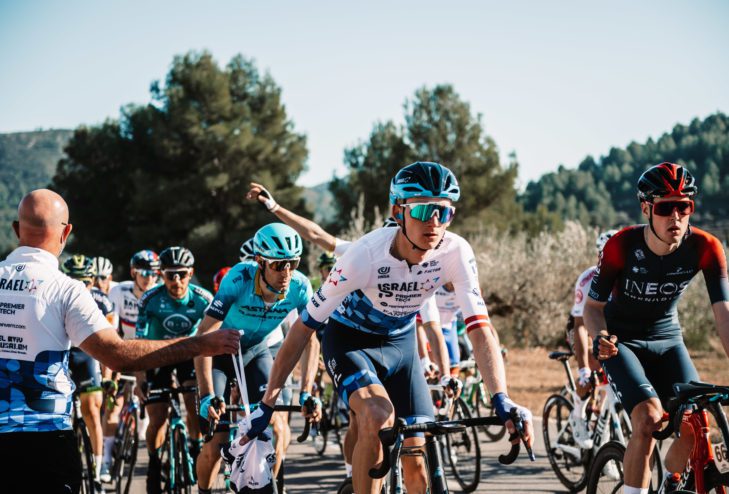
In the thick of the action
There aren’t many sporting events that compare to the endurance of Milano – Sanremo, a race where the average rider will burn 5000 – 5400 kcal. Even though the intensity is lower in the first hours, some riders must be prepared to react after the first half of the race and later in preparing the lead out for our sprinter, Giacomo Nizzolo.
“We are planning for 110-120g/h of carbohydrate per hour, depending on the rider, with lower carbohydrates in the first half of the race and on the higher end towards the final. Caffeine is also be timed throughout the race and gradually provided so that riders are ready to react towards the final.
“For these goals, the Maurten products will be crucial. In the early part of the race the Maurten 160 will be our drink of choice to be combined with other solid food items such as rice cakes. Roughly per hour, a rider will drink a Maurten 160 and consume a rice car and bar. When intensity starts to build up, our soigneurs will be ready in the feed zone and extra feeds to bring in the Maurten 320 drinks which riders will combine with Maurten gels, with and without caffeine,” explained Martins.
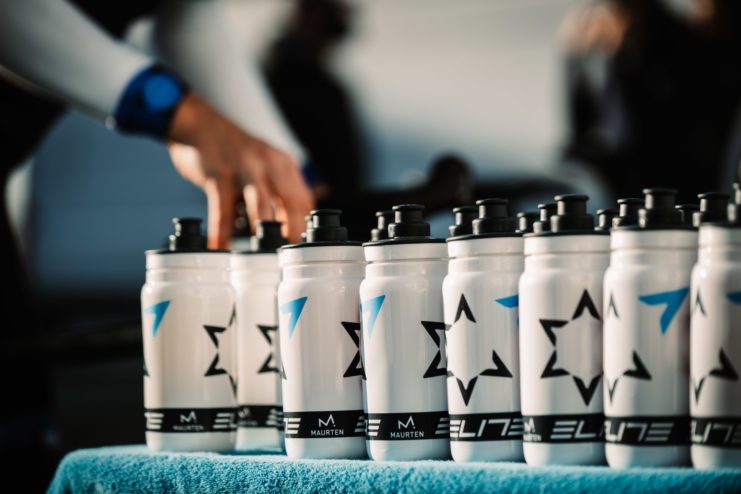
Timing is everything and the team plans its extra feed points strategically to ensure riders can easily get the correct nutrition products easily and at the right time. Behind in the race cars Sports Directors Claudio Cozzi and Nicki Sorenson are on hand with a cooler box full of Maurten drinks and a good supply of Maurten gels. Ready for any race situation.
Recovery starts now
The race may be over when the riders cross the finish line but it’s time for the next chapter; recovery. Riders will enter the bus to find an assortment of post-race nutrition options including rice, chicken, high protein yoghurt, granola, and fruit. A well-deserved hot shower awaits before following a carefully scripted recovery plan, which is normally split into two meals in the first and second hour post-race.
But, recovery is always dependent on two factors: Recovery from what? Recover for what?
“Depending on the upcoming races, riders might need to prioritize the recovery meals by topping up their glycogen stores for upcoming races. For other riders, taking a break and starting to work on their body composition, there might be an interest in using Milano – Sanremo to create a controlled energy deficit to prepare for the next race. This requires careful planning and closely monitoring riders’ immune function. This is why it’s really important to have tailored nutrition plans for each rider. It’s never a “one size fits all” approach when it comes to cycling,” added Martins.

